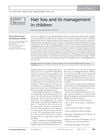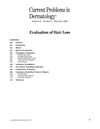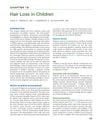Losing hair without the white bulb, Tressless GPT's Response. Do you guys agree? Treatment 11/14/2024
Hair loss without a white bulb may indicate mechanical damage, anagen effluvium, alopecia areata, or traction alopecia. Seeking a specialist is recommended, but access can be difficult in smaller areas.
View this post in the Community →
Similar Community Posts Join
5 / 415 resultscommunity The amazing fast pace of PP405.
PP405 is a new hair loss treatment advancing quickly in trials, generating excitement and skepticism about its effectiveness and marketing claims. Some see it as a potential alternative to minoxidil and finasteride, but concerns about long-term effects and the need for DHT blockers persist.
community The Real Cause Of Androgenetic Alopecia
Androgenetic alopecia is caused by DHT affecting hair growth. Finasteride and minoxidil are used to manage hair loss by blocking DHT and promoting hair growth.
community AGA evaluation and first steps - BEGINNER MEGAPOST
The conversation discusses androgenic alopecia (AGA) and its treatments, focusing on finasteride, minoxidil, and ketoconazole shampoo. Finasteride is recommended as essential for preventing further hair loss.
community My scalp punch biopsy results🤔?
Female using Rogaine foam for hair loss had scalp punch biopsy, diagnosed with Androgenetic Alopecia (AGA). Doctor recommended starting Spironolactone 50mg.
community HLT Megathread on HMI-115 (key takeaways in comments)
HMI-115, a newly discovered hair loss treatment that could potentially be effective for those with diffuse thinning and telogen effluvium. It is based on prolactin receptor antagonist signaling and has already undergone Phase I trials in women, with potential commercialization by 2027.
Related Research
6 / 1000+ results
research Evaluation and Diagnosis of the Hair Loss Patient
To diagnose hair loss, use a systematic approach including history, exams, and tests.

research Hair Loss And Its Management In Children
The document concludes that early diagnosis and a comprehensive treatment plan are crucial for managing hair loss in children, with a focus on both medical and psychological support.

research Evaluation of Hair Loss
Detailed patient history and physical exams are crucial for diagnosing hair loss.

research Trichoscopy as a Diagnostic Method in Non-Scarring Alopecia
Trichoscopy is a quick, accurate, and non-invasive method to diagnose and treat non-scarring hair loss.

research Hair Loss in Children: A Detailed Overview of Pediatric Alopecia
The most common cause of hair loss in children is tinea capitis, followed by alopecia areata and telogen effluvium.

research Diseases on Hair Follicles Leading to Hair Loss Part I: Nonscarring Alopecias
Common types of non-scarring hair loss have various causes and treatments, but more effective solutions are needed.